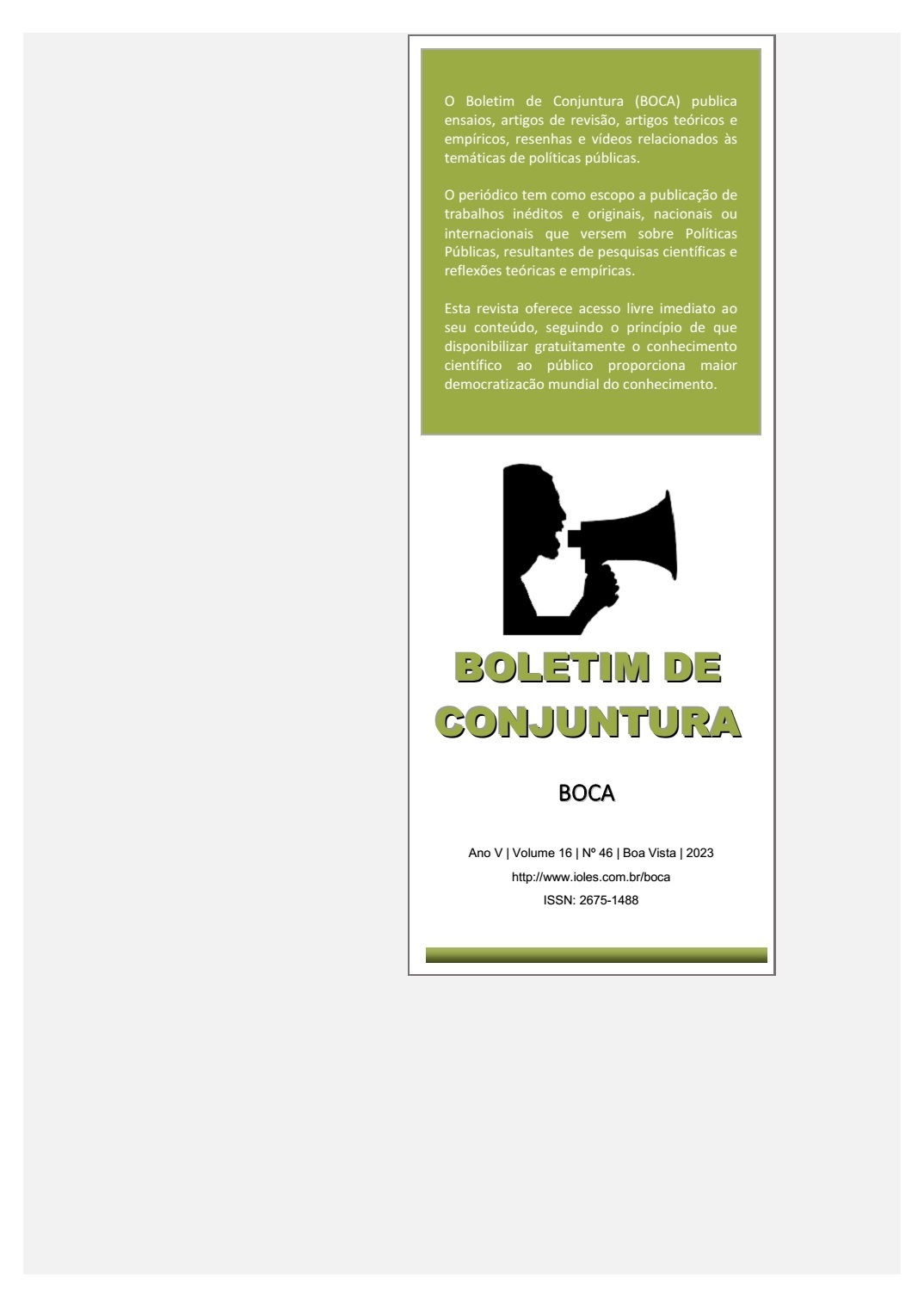TRICHOTILLOMANIA: A SYSTEMATIC REVIEW OF THE LITERATURE
Main Article Content
Abstract
Trichotillomania is a disorder characterized by the repetitive and compulsive act of pulling hair or hair, resulting in physical and functional impairment. The literature shows that individuals with trichotillomania may consider that health professionals are not trained or well informed to help them, which can lead to shame and a low demand for specialized help. Knowledge about how the disorder is seen and treated in each sociocultural context is important, and can support the development of strategies and policies that respect the specificities of this population. The present work aims to analyze Brazilian scientific productions on trichotillomania, with a view to systematizing their main results in relation to understandings and treatments for the disorder available in the country. This is a systematic review of the literature, with 24 articles meeting the inclusion criteria and being analyzed qualitatively and quantitatively. The analysis of the full articles showed that, in Brazil, the main treatments for trichotillomania reported in the literature are pharmacological and the researches are concentrated in the period between 2002 and 2012. Most studies (91.66%) are from the medical field (Psychiatry and Dermatology). Given the importance of an interdisciplinary work in the treatment of trichotillomania, it is indicated the need for greater dedication from Psychology in scientific research on trichotillomania, especially in exploring the potential of Cognitive-Behavioral Therapy, considering that psychotherapy has been presenting more promising results in treating the symptoms of trichotillomania than pharmacological treatments.
Article Details

This work is licensed under a Creative Commons Attribution 4.0 International License.
Copyright (c). Conjuncture Bulletin (BOCA)
This work is licensed under a Creative Commons Attribution 4.0 International License.
References
ANDRÉ, P. et al. “Trichotillomania - Psychopathological correlates and associations with health-related quality of life in a large sample”. CNS Spectrums, vol. 26, n. 3, 2021.
APA - American Psychiatric Association. Manual de diagnóstico e estatística de perturbações mentais: DSM-4-TR. Porto Alegre: Editora Artmed, 2002.
APA - American Psychiatric Association. Manual Diagnóstico e estatístico de transtornos mentais: DSM-5-TR. Porto Alegre: Editora Artmed, 2022.
BARROSO, L. A. L. et al. “Trichotillomania: a good response to treatment with N-acetylcysteine”. Anais Brasileiros de Dermatologia, n. 92, 2017.
CAIXETA, L.; LOPES, D. B. “Trichotillomania in a dementia case”. Dementia and Neuropsychologia, vol. 5, n. 1, 2011.
CARVALHO, V. O. et al. “Trichotillomania: a cry for help”. BMJ Case Reports, vol. 20, 2009.
CISOŃ, H. et al. “Trichotillomania and trichophagia: modern diagnostic and therapeutic methods”. Dermatology and Therapy, vol. 8, n. 3, 2018.
COHEN L. J. et al. “Clinical profile, comorbidity, and treatment history in 123 hair pullers: a survey study”. The Journal of Clinical Psychiatry, vol. 56, n. 7, 1995.
CRESCENTE JUNIOR, J. A. B.; GUZMAN, C. S.; TAVARES, H. “Quetiapine for the treatment of trichotillomania”. Brazilian Journal of Psychiatry, vol. 30, n. 4, 2008.
FARHAT L. C. et al. “Pharmacological and behavioral treatment for trichotillomania: An updated systematic review with meta‐analysis”. Depression and Anxiety, vol. 37, n. 8, 2020.
FERNANDES, M. R. D. N. et al. “Trichotillomania incognito: two case reports and literature review. Skin Appendage Disorders, vol. 7, n. 2, 2021.
FONTENELLE, L. F. et al. “Electroconvulsive therapy for trichotillomania in a bipolar patient”. Bulletin of the Menninger Clinic, vol. 83 n. 1, 2019.
FONTENELLE, L. F. et al. “The man with the purple nostrils: a case of rhinotrichotillomania secondary to body dysmorphic disorder”. Acta Psychiatrica Scandinavica, vol. 106 n. 6, 2002.
FRANÇA, K. et al. “Trichotillomania (hair pulling disorder): clinical characteristics, psychosocial aspects, treatment approaches, and ethical considerations”. Dermatologic Therapy, vol. 32, n. 4, 2019.
FRANKLIN, M. E.; ZAGRABBE, K.; BENAVIDES, K. L. “Trichotillomania and its treatment: a review and recommendations”. Expert Review of Neurotherapeutics, vol. 11, n. 8, 2011.
GALVÃO, T. F.; PANSANI, T. S. A.; HARRAD, D. “Principais itens para relatar Revisões sistemáticas e Meta-análises: A recomendação PRISMA”. Epidemiologia e Serviços de Saúde, vol. 24, n. 2, 2015.
GORDON, A. R. “Do retiro na tricotilomania ao mundo das trocas objetais”. Jornal de Psicanálise, vol. 44, n. 80, 2011.
GOULART-JUNIOR, R. M.; BRITTO, I. A. “Intervenção analítico-comportamental em tricotilomania”. Revista Brasileira de Terapia Comportamental e Cognitiva, vol. 12, n. 1-2, 2010.
GRANT, J. E.; CHAMBERLAIN, S. R. “Trichotillomania”. American Journal of Psychiatry, vol. 173, n. 9, 2016.
LIMA, M. C. P. et al. “Tricotilomania: dificuldades diagnósticas e relato de dois casos”. Revista Paulista de Pediatria, vol. 28, n. 1, 2010.
MARIUSSO, L. M. et al. “Trichotillomania: Case report of pharmacological treatment outcome with clomipramine”. Psychiatry Research, vol. 284, 2019.
MIRZA, M. B.; TALAT, N.; SALEEM, M. “Gastrointestinal trichobezoar: an experience with 17 cases.” Journal of Pediatric Surgery, vol. 55 n. 11, 2020.
PEREIRA, J. M. “Tricoses compulsivas”. Anais Brasileiros de Dermatologia, vol. 79, n. 5, 2004.
PINTO, A. C. V. D. et al. “Trichotillomania: a case report with clinical and dermatoscopic differential diagnosis with alopecia areata.” Anais Brasileiros de Dermatologia, vol. 92, n. 1, 2017.
PIRAS, G. N. et al. “An atypical death from Rapunzel syndrome: a case report.” Forensic Science, Medicine and Pathology, vol. 1 n. 8, 2023.
SNORRASON, I. et al. “Sex Differences in Age at Onset and Presentation of Trichotillomania and Trichobezoar: A 120-Year Systematic Review of Cases.” Child Psychiatry and Human Development, vol. 53, n. 1, 2022.
SOUZA, K. A. A.; ARAÚJO, T. M. E. “Prevalência do vírus da imunodeficiência humana em estudantes universitários: revisão sistemática”. Boletim de Conjuntura (BOCA), vol. 7, n. 21, 2021.
VILELA, A. C. et al. “Trichotillomania associated with bipolar disorder and obsessive compulsive disorder: Pathoplasty or comorbidity?”. International Journal of Trichology, vol. 6, n. 36. 2014.


